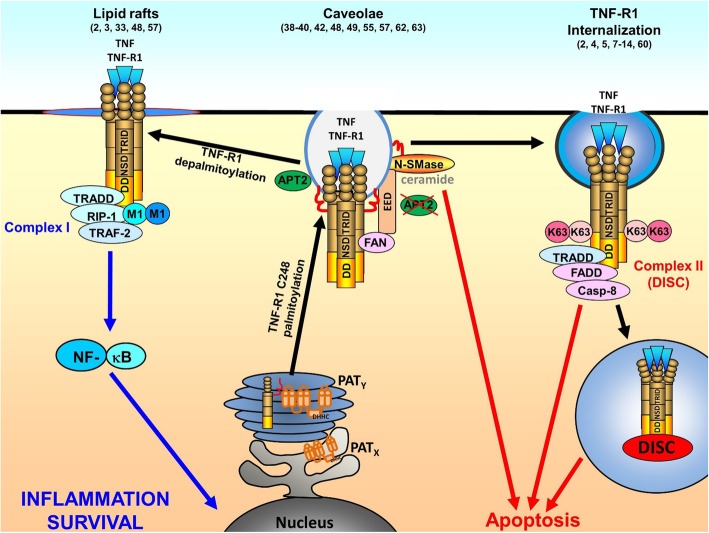Fig. 6.
Model. TNF-R1 is palmitoylated in the ER (PATx) or Golgi (PATy) and transported to caveolae in the plasma membrane. After TNF binding, TNF-R1 is either de-palmitoylated by APT2, resulting in translocation to another lipid raft compartment, complex I formation and signaling for NF-κB activation. Alternatively, TNF-R1 may translocate out of caveolae and TNF-receptosomes are formed by clathrin dependent internalization. This allows complex II/DISC formation by intracellular maturation. In case of APT2 depletion/inhibition, activated TNF-R1 induces nSMase dependent ceramide production in caveolae which triggers cell death

